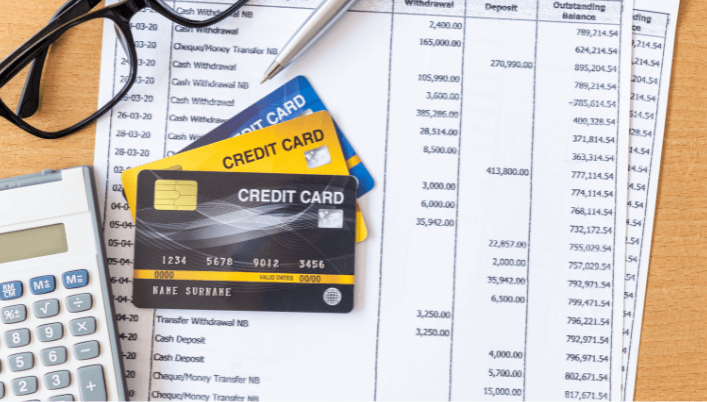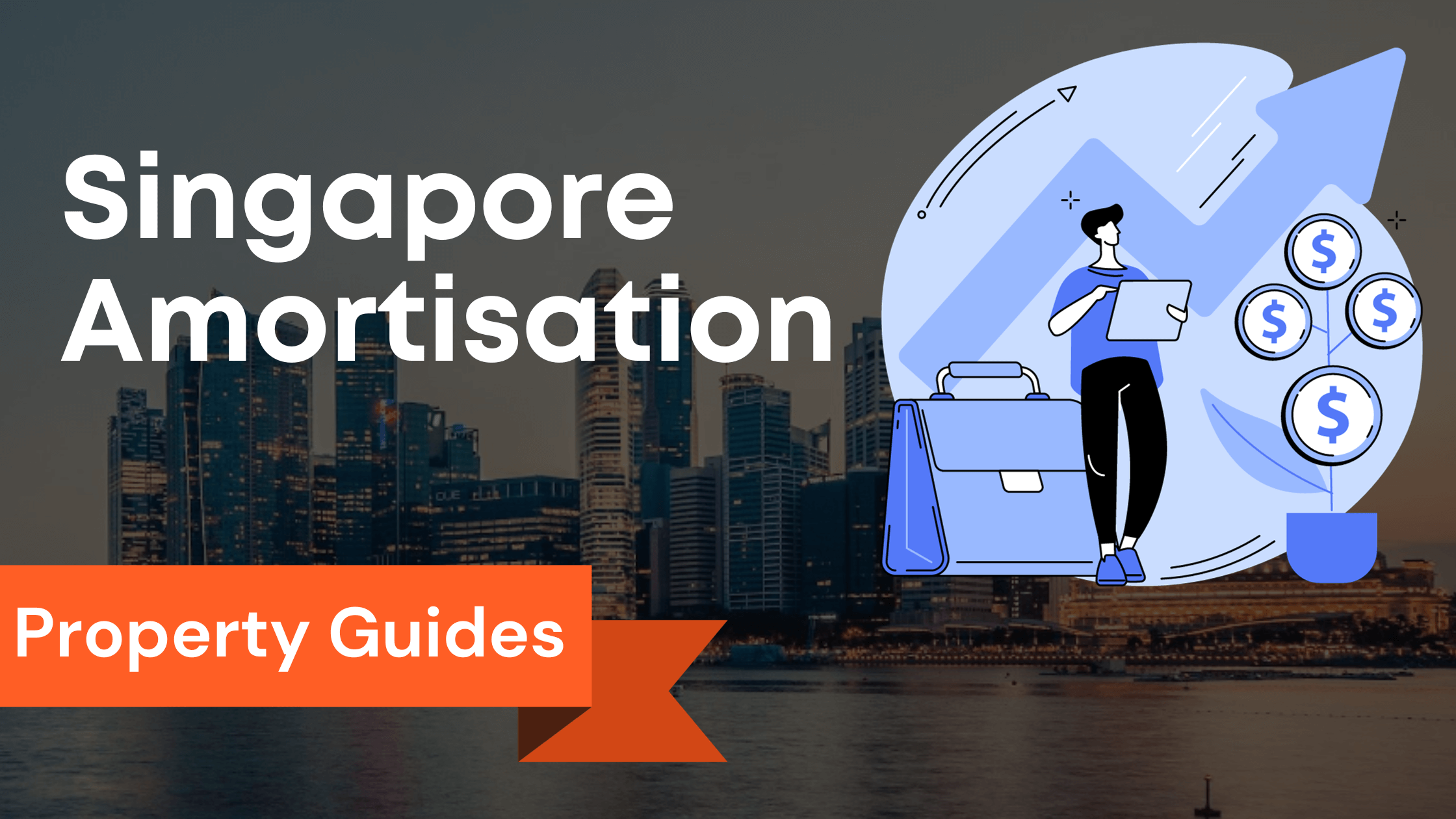
When it comes to borrowing money, understanding the true cost of a loan is crucial.
This is where the Annual Percentage Rate (APR) comes into play. In Singapore, APR is a standardized measure that helps borrowers determine the overall cost of a loan, including high interest rates and other fees.
Understanding the concept of Annual Percentage Rate (APR) is essential for borrowers in Singapore.
It allows for a comprehensive comparison of loan offers, ensuring that borrowers can make informed financial decisions.
By considering the APR along with other factors like loan type, fees, and terms, borrowers can determine the true cost of borrowing and select the most favorable loan offer.
Key Takeaways
- Importance of APR: Understanding Annual Percentage Rate (APR) is crucial in Singapore’s financial landscape, revealing the true cost of borrowing, inclusive of interest rates and fees.
- Calculation Complexity: Calculating APR involves considering loan principal, interest rate, loan term, fees, and compounding frequency, ensuring a comprehensive view of borrowing costs.
- Comparative Analysis: APR facilitates informed decisions by enabling comparisons of different loan products, credit cards, or deposit rates, assisting individuals in choosing the most cost-effective options.
- Factors Influencing APR: Various factors impact APR, such as interest rates, credit history, promotional rates, and additional costs. Consumers must review terms and conditions to avoid unforeseen fees.
- Role of Interest Rates: Interest rates play a pivotal role in Singapore, affecting investments and borrowing costs. Fixed deposit rates and credit card APR are key considerations for investors and borrowers.
- 2023 Fixed Deposit Rates: Staying informed about fixed deposit rates in 2023 is vital for investors. Rates are influenced by market conditions, monetary policies, and differ across lenders.
- Choosing the Best Rate: To find the best fixed deposit rate, investors should look beyond headline rates, consider tenure, evaluate the institution’s track record, and compare promotional rates.
- Credit Card APR Comparison: Understanding credit card APR is crucial when choosing a card. It reflects the true cost of credit, considering interest rates, fees, and transaction types.
- Calculating Credit Card APR: Credit card APR is calculated monthly, and users can employ a formula involving the total finance charge and average daily balance to understand the overall borrowing cost.
- Managing Credit Card Debt: To avoid high-interest payments, it’s recommended to pay off credit card balances monthly, stay updated on changing interest rates, and consider debt consolidation for more favorable terms.
Introduction to Annual Percentage Rate (APR) in Singapore

Singapore is known for its thriving financial industry and competitive interest rates.
One important metric that individuals and businesses need to understand when dealing with loans, credit cards, and other financial products is the Annual Percentage Rate (APR).
The APR is an essential factor in making informed and cost-effective financial decisions.
What is APR and why is it important in Singapore?
The Annual Percentage Rate (APR) is a measure of the total cost of borrowing, including both the interest rate and additional fees, expressed as an annual percentage.
In Singapore, the APR is a vital consideration because it provides a clearer picture of the true costs associated with borrowing money.
While the interest rate only reflects the nominal interest charged, the APR accurately accounts for compound interest, fees, and other charges.
Calculating the APR is crucial when comparing different loan options, credit card offers, or deposit rates.
By understanding the APR, individuals can make more informed decisions about which product offers the best value in terms of cost.
For example, comparing the APR of a fixed deposit rate in Singapore to the APR of a credit card interest rate can help consumers determine where they can earn better returns on their savings or get the best deal on credit.
How to calculate APR in Singapore
Calculating the APR in Singapore may seem complex, but it is an essential process in understanding the true cost of borrowing.
To calculate the APR, you need to consider the loan principal, interest rate, loan term, any additional fees, and the compounding frequency.
The formula for calculating APR in Singapore involves considering the interest charges over the loan term and the fees associated with the loan.
By incorporating these factors, the APR provides a more accurate representation of the total cost of borrowing.
Factors that affect APR in Singapore
Several factors can influence the APR of loan products and credit cards in Singapore.
These factors can vary among lenders and financial institutions.
Some key factors include the interest rate, credit card providers, promotional interest rates, Singapore Savings Bonds, credit history, origination fees, and additional costs such as closing costs and underwriting fees.
For credit cards, APRs can be subject to change, and different interest rates may apply to different transactions, such as cash advances.
Late payments and credit agreements can also affect the APR.
It is crucial for consumers to carefully review the terms and conditions of credit card offers to understand the APR and avoid unnecessary fees.
Understanding and calculating the APR in Singapore is vital for making informed financial decisions.
By considering the APR, individuals can compare different loan products, credit card offers, or deposit rates more accurately.
Taking into account the true cost of borrowing can help individuals save money, maximize their savings, and make sound financial choices in Singapore’s dynamic financial market.
Interest Rates in Singapore: Best Fixed Deposit Rate in Singapore

Interest rates play a crucial role in the financial landscape of Singapore.
Whether you’re looking to invest your savings or borrow funds, understanding the annual percentage rate (APR) and how it affects your finances is essential.
Aug 2023, Jun 2023, and Jul 2023 mark a period of significant changes in the financial landscape, particularly in relation to interest rates.
The higher interest rates are expected during this time, leading to a potential impact on the Singapore dollar and the overall economy.
With the intention to curb inflation and maintain financial stability, the Monetary Authority of Singapore (MAS) has announced an increase in the benchmark interest rate.
This decision has far-reaching consequences, especially for individuals or businesses reliant on loans and financial products that are priced based on interest rates.
Consequently, those with existing loans or debts will experience an increase in their monthly repayments, potentially putting additional strain on their finances.
On the other hand, savers and investors may find some relief.
This is because the highest interest rate typically translate to more lucrative opportunities in the market.
Investors seeking safe and reliable options could consider the highest fixed deposit rate available during this time.
However, it is important to note that higher interest rates can also lead to decreased consumer spending and slowdown in economic growth.
As the Singapore dollar strengthens against other currencies due to the higher interest rate, exporters may encounter challenges as their products become comparatively more expensive.
Overall, the combination of the highest interest rates and its impact on the Singapore dollar creates a complex economic landscape that requires careful analysis and strategic decision-making across various sectors and industries.
As of September 30, 2023, the rate of 3.20% for promotional fixed deposit accounts in Singapore is certainly worth considering.
With the current economic climate and fluctuating interest rates, this fixed rate provides a sense of stability and security for depositors.
Singapore Deposit Insurance Corporation (SDIC) further adds to the peace of mind, as it guarantees the deposits up to SGD $75,000 per depositor, in case of any unfortunate circumstances.
When opting for a fixed deposit account, it is essential to assess the interest that will be paid.
This is especially crucial as it affects the overall return on investment.
With a 3.20% rate, depositors can expect a decent return, allowing their money to grow in a low-risk manner.
However, it is vital to note that one must consider applicable taxes and fees when calculating the final interest earned.
It is always wise to consult with a financial advisor or banker to fully comprehend the terms and conditions of the particular fixed deposit account.
By understanding the rate, SDIC coverage, and potential interest payment, depositors can make informed decisions that align with their financial goals.
With a promotional fixed deposit rate of 3.20%, depositors stand to benefit from a competitive return and the assurance of SDIC coverage.
Overview of interest rates in Singapore
In Singapore, fixed deposit rates are commonly used to gauge the returns on savings.
Fixed deposits are a popular investment option as they offer a guaranteed return over a fixed period of time.
The best fixed deposit rates are usually offered by banks and financial institutions, and they can vary across different lenders.
Calculating interest on a fixed deposit is relatively straightforward.
The interest is calculated on a nominal interest rate that is typically compounded monthly.
The annual rate is then determined using the effective interest rate formula.
This helps you understand how much interest you can earn over a year.
On the borrowing side, credit card interest rates are a significant consideration for many Singaporeans.
Credit card APR determines the cost of borrowing on these cards.
Singaporeans also have the option to invest in Singapore Savings Bonds, which offer a fixed interest rate over a specified period.
Fixed deposit rates in Singapore for 2023
For individuals looking to invest their savings, it’s important to stay informed about the prevailing fixed deposit rates in Singapore.
These rates determine how much interest you can earn on your deposits.
In 2023, experts expect that fixed deposit rates will continue to be influenced by factors such as market conditions and monetary policies.
Different lenders may offer different rates, so it’s crucial to compare options and choose the best fixed deposit rate for your needs.
It’s also essential to consider the standards and consistency across lenders when evaluating fixed deposit rates.
Additionally, be aware of any additional fees that might be charged by the lender, as they can impact the overall returns on your investment.
Finding the best fixed deposit rate in Singapore
To find the best fixed deposit rate in Singapore, you need to consider several factors.
Firstly, it’s important to look beyond the headline rate.
Consider the tenure of the deposit and how it aligns with your financial goals.
Next, evaluate whether the financial institution offering the rate has a consistent track record of providing competitive rates.
Assess their reputation and customer reviews to ensure they are a reliable choice.
Comparing promotional fixed deposit interest rates can help you earn higher interest on your savings.
These rates are often offered for a limited time and can provide an attractive option for maximizing your returns.
Remember, it’s crucial to calculate the APR accurately when comparing fixed deposit rates.
This will help you make an informed decision and choose the best option for your financial goals.
In conclusion, understanding interest rates in Singapore is essential for both investors and borrowers.
Whether you’re considering fixed deposit rates or credit card APR, thorough research and comparison are crucial to maximize your returns or minimize your borrowing costs.
Stay informed, evaluate your options, and make wise financial decisions.
APR and Credit Cards Bank in Singapore

Understanding credit card interest rates and APR
When it comes to credit cards in Singapore, it is important to understand how interest rates and Annual Percentage Rate (APR) work.
The APR is an important factor to consider when comparing different credit cards and making informed financial decisions.
APR represents the annual cost of borrowing, including the interest rate and any additional charges or fees.
It provides a more comprehensive picture of the true cost of credit compared to the interest rate alone.
In Singapore, credit card APRs can vary depending on the card issuer and the type of credit card.
In addition to credit card APR, it is also worth mentioning the Savings Bond APR.
Singapore Savings Bonds are financial instruments backed by the Singapore government and are considered low-risk investments.
The APR for Singapore Savings Bonds is determined by the government and offers an alternative investment option for individuals.
Comparing credit card APR in Singapore
When comparing credit card APR in Singapore, it is essential to consider various factors.
Different credit card issuers offer different interest rates and APRs, and these can vary based on the type of credit card, such as rewards, cashback, or travel cards.
It is recommended to compare credit card APRs and other features, such as rewards programs, annual fees, and promotional offers, to find the best card that suits your needs and financial goals.
Calculating APR on a credit card in Singapore
To calculate the APR on a credit card in Singapore, you need to consider the credit card’s interest rate, any additional charges, and how interest is calculated.
The interest rate on a credit card is usually stated as an annual percentage rate.
However, it’s important to note that the interest is calculated on a monthly basis.
For example, if the annual interest rate is 18%, the monthly interest rate would be approximately 1.5%.
In addition to the interest rate, credit card APR may also include other charges, such as cash advance interest or annual fees.
These additional charges can increase the overall APR.
To calculate the APR on a credit card, you can use online calculators or follow this formula:
APR = (Total Finance Charge / Average Daily Balance) × 365 × 100
It’s important to note that the APR calculation may vary slightly depending on the card issuer and their specific terms and conditions.
By understanding credit card interest rates, APRs, and how to calculate them, you can make more informed decisions when choosing a credit card in Singapore.
When it comes to credit cards in Singapore, it is crucial to understand the concept of APR and how it affects your borrowing costs.
Comparing credit card APRs and considering additional charges can help you find the best card for your needs.
Additionally, calculating the APR on a credit card allows you to understand the overall cost of borrowing and make more informed financial decisions
Credit card interest rate vs. Singapore Savings bond interest is Calculated

Pros and cons of credit card interest
Credit card interest rates in Singapore can vary depending on the credit card provider and individual circumstances.
Understanding the pros and cons of credit card interest can help you make informed decisions when it comes to managing your finances.
- Interest on top: Credit cards offer the convenience of making purchases without the need for immediate payment. However, if you carry a balance from month to month, you will be charged interest on top of your outstanding balance.
- Different interest rates: Credit cards have different interest rates for different types of transactions. The most common is the annual percentage rate (APR) which represents the yearly interest charged on daily balances.
- Purchases made using your credit card: When you make purchases using your credit card, the interest is calculated based on the daily balance and added to your outstanding amount.
- Format of interest rates: Credit card interest rates are usually stated in a periodic interest rate format, such as a monthly or annual rate, along with the method of calculating interest.
Pros and cons of savings bond interest
Savings bonds in Singapore, such as the Singapore Savings Bonds (SSB), offer an alternative way to earn interest on your money.
Here are the pros and cons of savings bond interest:
- Interest on your money: Savings bond interest allows you to earn a fixed rate of return on your investment. The interest rates for savings bonds are set by the government and are subject to change.
- Market interest rates: The rates offered by savings bonds are influenced by prevailing market interest rates. This means that if market rates rise, the interest paid on your savings bonds may increase as well.
- Purchase option: Savings bonds offer flexibility in terms of the amount you can invest. You can purchase savings bonds in multiples of $500, up to a maximum of $200,000.
- Calculation of interest: Savings bond interest is calculated on a daily basis and paid out every six months. The interest is based on a periodic interest rate, which is set in advance.
Which one is right for you?
Deciding between credit card interest rates and savings bond interest depends on your financial goals and circumstances.
Consider the following factors:
- Credit card interest rate: If you need short-term financing for purchases or if you can pay off your credit card balance in full each month, credit card interest may be manageable. Take advantage of promotional rates and consider the periods between transactions.
- Savings bond APR: If you have excess funds and are looking for a low-risk investment option, savings bonds can provide a steady rate of return. Take into account the purchase price, separate transaction, and the market rates at the time of investment.
It is important to compare the interest rates, fees, and terms associated with both credit cards and savings bonds. Consider seeking advice from financial professionals to make an informed decision based on your specific needs and goals.
Credit cards in Singapore (2023) – Credit Card Apr | Calculate Credit Card Interest | Cash Advance Interest

The rate of 3.20% which will be effective on September 30, 2023, is a matter of concern for individuals and businesses who hold deposit accounts.
With this rate, they may experience significant decreases in the interest they earn on their deposits.
It is important for individuals to carefully evaluate their options and assess the potential impacts of this rate on their financial situation.
Additionally, the amount of interest that one will be paying on loans and credit cards should also be considered.
The Annual Percentage Rate (APR) applies to these financial instruments, and it determines the total cost of borrowing.
With a rate change, borrowers may find themselves facing higher interest payments, adding to their already existing financial obligations.
Furthermore, it is essential to note that the overnight rate will also play a role in determining the interest rates applicable to loans and deposits.
The overnight rate, maintained by the central bank, has a direct influence on the cost of borrowing for financial institutions.
If this rate is increased, it may lead to higher interest rates on loans, mortgages, and credit cards.
Hence, the rate of 3.30% that may take effect should be closely monitored, as it can have a significant impact on the overall cost of borrowing and deposit returns for individuals and businesses alike.
When it comes to financial planning, choosing the right fixed deposit promotion is crucial.
In this regard, the current market is offering an enticing rate of 3.40%, which should not be overlooked.
However, it is important to note that rates are always subject to change, and it is vital to stay informed about any fluctuations.
While the current rate is commendable, it is advisable to closely monitor the market for any potential increase or decrease in interest rates.
Additionally, it is worth exploring other options available in the market, as there may be other promotions offering attractive rates of interest.
For instance, some financial institutions may be offering an interest rate of 3.20%, which may seem slightly lower but could come with additional benefits and features that make it a more lucrative choice.
Making a well-informed decision requires understanding the terms and conditions, comparing the rates offered by different institutions, and considering one’s financial goals.
Therefore, it is essential to carefully evaluate the pros and cons of each fixed deposit promotion and seek professional advice if needed.
By doing so, individuals can make the most of their savings and ensure a financially secure future.
How to avoid paying high credit card interest
Credit card holders in Singapore are always looking for ways to avoid paying high-interest rates.
With the interest rate on credit cards often being higher compared to other types of debt, it’s crucial to understand how to manage and calculate credit card interest.
One way to avoid high credit card interest is to pay off the balance in full each month.
By doing so, you eliminate the need to pay interest on the remaining balance.
However, if you are unable to pay the full amount, it’s important to be aware of how interest is calculated and how it can impact your finances.
Credit card interest rates in Singapore can change at any time, so it’s essential to stay updated with the current rates.
Different banks and credit card issuers may offer varying rates, so it’s important to compare and choose a card with a lower interest rate.
Interest on credit cards is typically calculated on a monthly basis.
There are different calculation types and rules depending on the bank or credit card issuer.
You can refer to the specific terms and conditions provided by your credit card issuer or refer to the White Paper on the equation for calculation.
It’s also essential to be aware of any conditional charges or conversion factors that may apply to your credit card interest.
These charges can further increase your overall interest payment.
Tips for managing your credit card debt
Managing credit card debt is essential for financial well-being. Here are some tips to help you manage your credit card debt effectively:
- Pay more than the minimum amount due on your credit card bill. This will reduce the principal balance and decrease the amount of interest you’ll be paying.
- Consider consolidating your credit card debt with a personal loan. Personal loans often have lower interest rates compared to credit cards, which can help you save money in the long run.
- Be cautious when taking advantage of credit card offers, such as cash advances. Cash advance interest rates are typically higher than regular credit card interest rates, so it’s important to use them sparingly.
- Understand the different types of credit card APRs (Annual Percentage Rates). Different types of loans, such as home equity loans or personal loans, may have different APRs. It’s important to consider the effective cost of borrowing when comparing different types of loans.
- Take into account the non-included cost components, such as notional cost, pass-through cost, and up-front fixed closing costs when evaluating the actual borrowing costs of a credit card or loan.
By following these tips, you can effectively manage your credit card debt and minimize the amount of interest you pay over time.
Remember to stay informed about the latest credit card rates and terms offered by banks in Singapore to make the best financial decisions.
Conclusion
Importance of considering APR when choosing a loan
When it comes to choosing a loan, understanding the Annual Percentage Rate (APR) is crucial.
It provides a clearer picture of the true cost of borrowing and allows borrowers to make informed financial decisions.
The APR takes into account not only the interest rate but also any additional fees and charges associated with the loan.
By considering the APR, borrowers can compare different loan offers and choose the one that best fits their needs.
For example, when comparing mortgage lenders, looking at the APR can help determine the true cost of a loan over the long term.
A 30-year fixed-rate mortgage may have a lower interest rate but higher loan origination fees compared to another loan provider.
By looking at the APR, borrowers can see the real cost of each loan and make a more accurate comparison.
How to use APR to make informed financial decisions
To make the best use of APR when making financial decisions, here are a few tips:
- Always compare the APR: When considering different loan options, always compare the APR rather than just the interest rate. The APR provides a more comprehensive view of the cost of borrowing.
- Look beyond the promotional period: Some loans may offer a lower interest rate for a promotional period, but the APR after the promotional period ends may be significantly higher. Consider the APR for the entire duration of the loan.
- Be aware of additional charges: Loan origination fees, closing costs, and other charges can significantly impact the APR. Take these into account when evaluating loan offers.
- Understand the time period: APR is typically calculated on an annual basis, but some loans may have different payment periods. Make sure you understand how often interest is compounded and how it affects the APR.
- Seek unbiased content: When researching APR, look for reliable sources such as reputable publishers or consult with a financial advisor or tax advisor. Avoid relying solely on advertisements or promotional materials.
By considering the APR, borrowers can make more informed decisions about their loans, understand the true cost of borrowing, and avoid any surprises down the line.
Taking the time to understand and compare APRs can save borrowers money and ensure they choose the best loan option for their financial situation.
Frequently Asked Questions
What is the Annual Percentage Rate (APR)?
The Annual Percentage Rate (APR) is the yearly interest rate charged on the borrowed money or the credit extended to you. It takes into account the interest rate as well as any additional fees or charges over the course of a year.
How is the APR different from the interest rate?
The interest rate represents the cost of borrowing the money, while the APR includes both the interest rate and any additional fees or charges associated with the loan.
How do I calculate the APR on a credit card?
To calculate the APR on a credit card, you need to divide the total interest paid in a year by the average balance of the credit card. This will give you the APR expressed as a percentage.
What is compound interest?
Compound interest is the interest calculated on the initial principal as well as on the accumulated interest from previous periods. It can significantly increase the total amount owed or the earnings on an investment over time.
What is the difference between Fixed Deposit Rates and Singapore Savings Bonds?
Fixed Deposit Rates are interest rates offered by banks in Singapore for fixed deposits, while Singapore Savings Bonds are Singapore government securities that offer a fixed interest rate over a specific period.
How do I calculate APR on a loan?
To calculate the APR on a loan, you need to consider the loan amount, the interest rate, and any additional fees or charges. Using a loan calculator or an APR calculator can help you determine the APR accurately.
What is an adjustable-rate mortgage?
An adjustable-rate mortgage is a type of mortgage where the interest rate can change over time based on market conditions. This means that your monthly payment may fluctuate throughout the life of the loan.
What is an introductory rate for Aug 2023?
An introductory rate is a temporary lower interest rate offered by lenders to attract borrowers. It is usually available for a limited period, after which the interest rate will adjust to the regular rate.
What is the lowest interest rate I can get in Singapore for fixed deposits?
The lowest interest rates for fixed deposits in Singapore can vary depending on the bank and the prevailing market conditions. It is advisable to check with different banks to find the best rates.
Are deposit interest rates in Singapore subject to change?
Yes, deposit interest rates in Singapore are subject to change based on various factors, including market conditions and the monetary policies of the central bank. It is important to monitor the rates regularly to maximize your returns.












